The Best Teacher Is the White-Tailed Buck.
Alright. So I hesitated to even publish this post. Mostly due to the fact that finding hunting land is competitive and people act stupid when it comes to big bucks.
So let's go ahead and get something out of the way. Let me state for the record that all of these bucks are dead. Either myself, my hunting buddies, or neighboring hunters killed them. Those that weren't confirmed hunter kills are assumed dead, as many of these photos are at least four or five years old, with no sightings since these photos were taken.
Another thing: Yes, I do give names to certain bucks. Why? It's more of a convenience thing. That's how me and those I hunt with identify certain bucks during conversation. It's much easier than saying, You know, the 3-year-old with the big kicker on the right G2 and the split G3 with the ripped right ear that usually beds down in the back 40 swamp?
And no, I'm not the bozo who says, Yes! I just torched Big Show with my awesome (insert brand) broadhead and my (insert brand) bow! He ran 10 yards and I used my (insert brand) binoculars to make sure he was down! Man, that (insert brand) scent lure brought that joker in on a string! Shucks man, I pole-waxed that swamp donkey.
Nope. That's not my game. But nothing against those whose game it is, though.
I guess the purpose of this post is to show that I've learned the most from the one source that knows it all: the white-tailed deer. And let me tell you, they've taught me a lot of painful lessons. So, hopefully you can learn these lessons right here so you don't have to learn them in the woods. And trust me, it's much better to learn them here. The ones that get away haunt you forever.
Some of these lessons I learned long ago before these bucks entered my life. But each of them reinforced a particular lesson well or they wouldn't be in this gallery. I hope you find them educational.
Go here for more deer hunting stories and how-to's. Check us out on Facebook.
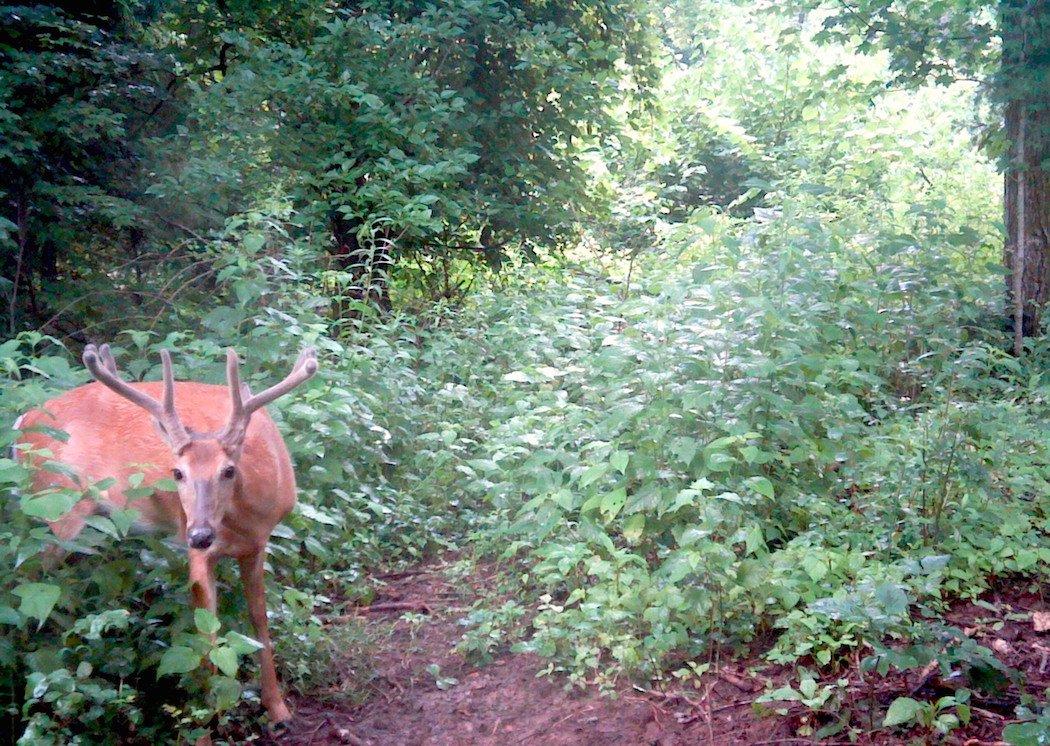
This is a buck from quite a few years back. As you can see, the last photo I received of it was about halfway through the growing phase. A super-wide deer that looked like it grew even wider than it was here. But I wouldn't know. I spooked it. Never saw it again.
Lesson: Be extremely careful when conducting pre-season duties. I got photos of this buck in late-June. It'd become a regular. I eased in around early-July to scout and hang a stand for the September opener, thinking it was still early enough I wouldn't pressure this deer. Wrong. One very quiet trip in was enough to make this deer find a new home.
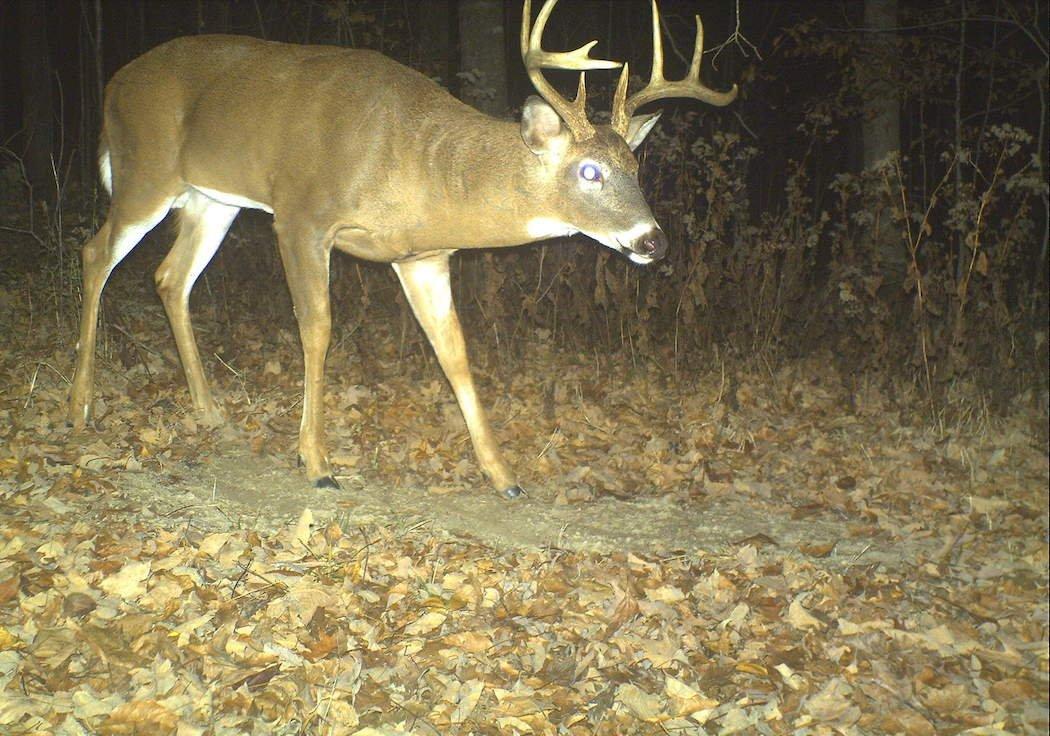
This is a deer that reinforced a very important truth. This buck worked the pictured scrape as I was climbing into the stand the morning I killed the buck in slide No. 4.
Lesson: Good entry routes are very important. I heard this buck work a scrape as I climbed into the stand during the pre-dawn darkness. I know it was this deer because the time stamp matched the time I climbed into the stand that day. The scrape was only 25 yards from my treestand and the buck never knew I was there. That's the power of having a good entry route. Stay quiet, concealed, and downwind on the way to the stand.

This is a deer that my father killed. Watch that hunt here. It's an extremely-wide buck that frequented one particular piece of ground we hunt. I received gobs of photos of this deer. It was a homebody and seemed to rarely leave the property, but always bedded in a different place.
Lesson: I've learned over time that mature bucks generally find two or three places they like to bed and that's it. Some bucks even use the exact same bed every time. Not so with this deer. This buck bedded in numerous locations. The point: Every buck is different and has its own personality.

This deer fell to a well-placed arrow back in 2012. I waited and hunted this buck once I knew the odds were in my favor. Then one morning in October, I moved in to kill this deer. A front was moving in and bad weather was supposed to hit around midday. This buck walked out a few minutes after daylight.
Lesson: Choose the right time to move in. I waited until conditions were perfect to hunt this buck. After all, your first sit in a treestand is the best time to kill a mature buck. After that, the odds decline.
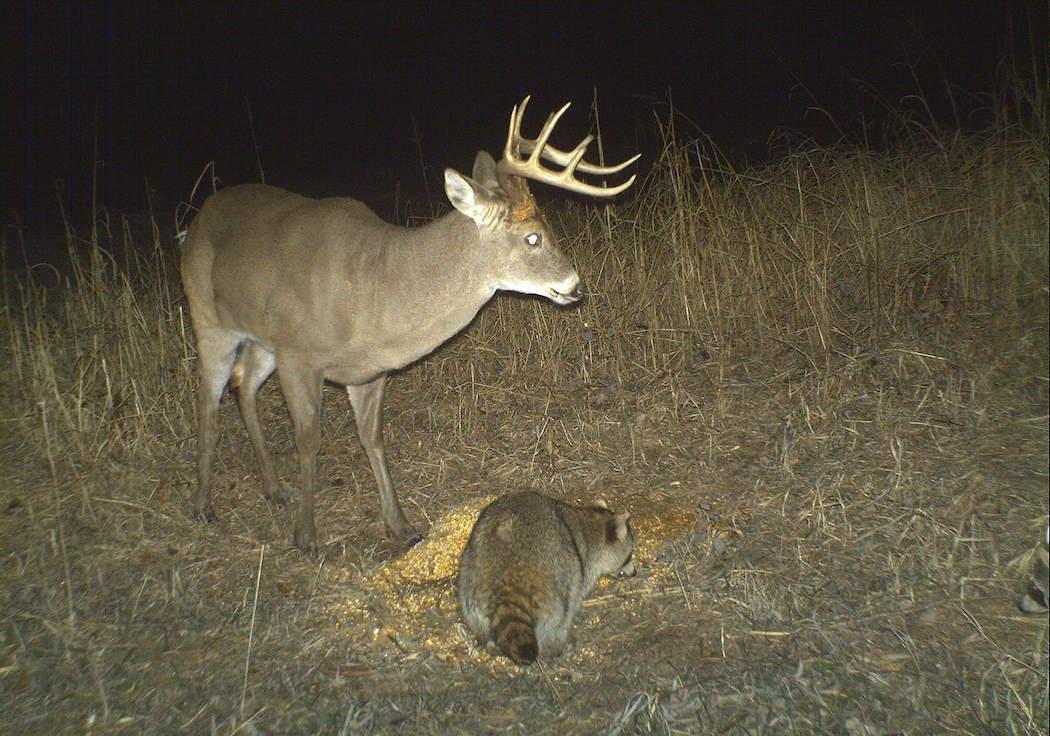
Some of the best-looking main beams I've ever seen. Bar none. This buck was a bruiser, for sure. And a warrior. As you can see, this buck had four broken tines.
Lesson: This buck lived on a piece of ground I hunted. But I never caught up to this deer to kill it. Therefore, I fully expected to see this deer the following year. Didn't happen. The deer was killed four miles away (as the crow flies) by another hunter I knew. The takeaway: A buck's home range can and will (sometimes) change from year to year.
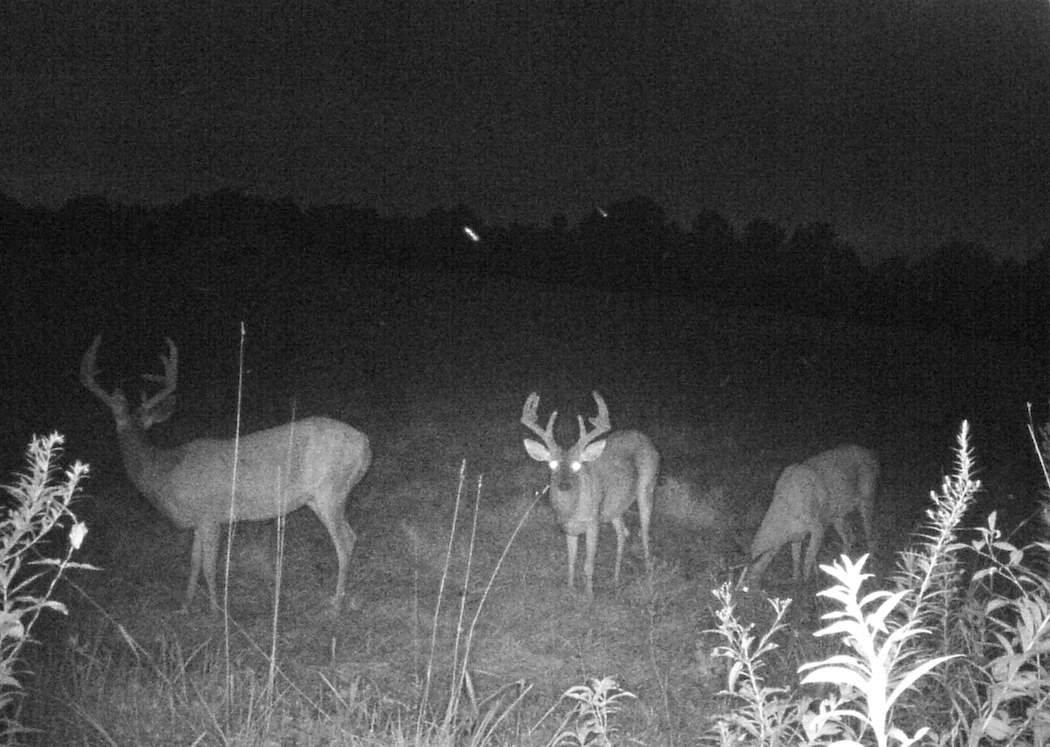
I killed this buck (in the center of the photo) last fall. It was my first velvet buck. And it taught me the biggest lesson on wind and mature bucks that I've ever learned. Go here for the complete story about that hunt.
Lesson: I have some news. While in the treestand, you don't always want the wind in your face. As a matter of fact, I usually don't. Here's why: Mature bucks move better (in a given area) when they think the wind is in their favor. Think I'm lying? Watch deer over a period of time. Or monitor trail cameras. Either one will work. But watch to see where that buck enters the open from and make note of the wind direction. I think you'll almost always see the buck used the wind to its advantage to get where it was going. If the wind is in your favor, and not the buck's, chances of seeing it are less because it won't move until dark, or it will take another route where the wind is more to its advantage.
One afternoon, this buck came out on the far side of the field. Where it entered allowed it to wind anything that might have been waiting in the timber on its way out. Upon entering the field, that buck traveled parallel to the treeline about 70 yards out. It walked that line all the way to me. All the while, the wind was blowing straight from the treeline to it. I stopped the buck about 40 yards shy of catching my wind and took a slightly quartering-to shot.
That buck was smart. It thought the wind was in its favor. And I let it think that. Because I knew where it would enter the field and at what point it would smell me. I shot it before it got there. But by hunting that spot when the wind was more favorable for the deer than me is what allowed me to kill it. It's risky. But it's effective.
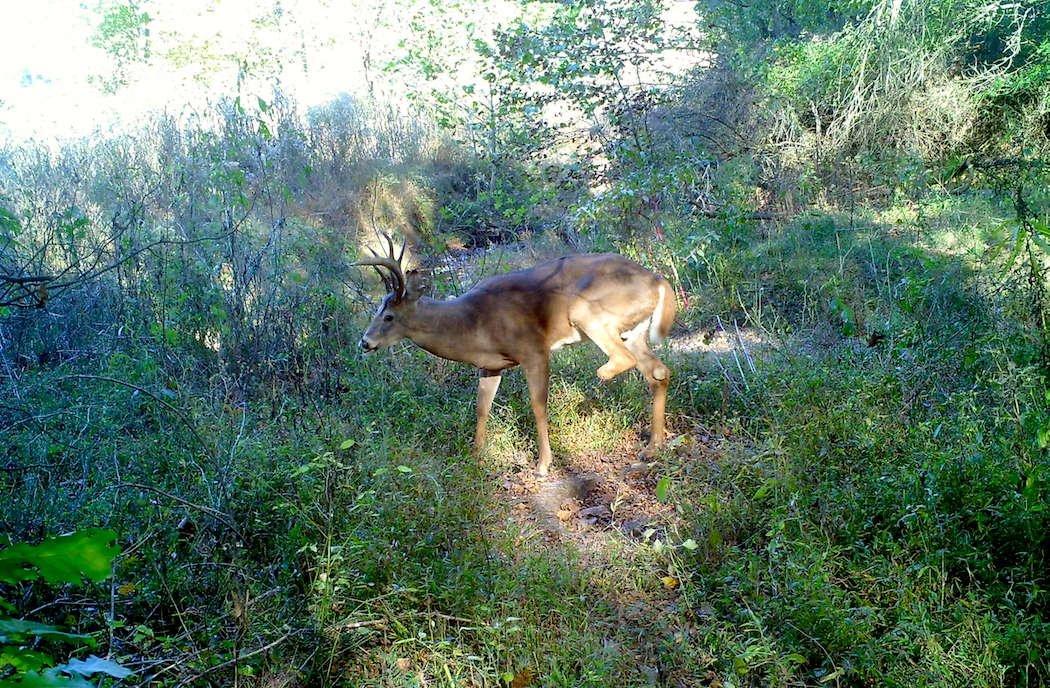
You're looking at a 7-year-old buck. Click here for the complete story on this deer. It lived a long life. And as you can see, it lived a tough life, too.
Lesson: Deer are tough animals. Tougher than we often give them credit for. This buck lived for two years without its rear left leg. That's a long time to walk on three hoofs. But this buck did it. And I've never had more respect for a whitetail than this one. It was killed last season by a neighboring hunter.

This is the buck I killed during the 2013 season. It was a smart deer. It confined itself (best I could tell) to a 5-acre sanctuary. There was no way into this sanctuary to kill this buck and it knew it. A giant cornfield surrounded this block of cover. The only option was to set up on the edge of it and hope this buck showed up in daylight. After a long season, it finally did. And I took the dandy 10-point home with me.
Lesson: Don't think you can't kill a deer on a small piece of property. This deer was bedding in a 5-acre thicket. Its home range was bigger than that counting its feeding ground. But I'm guessing ‚ based on trail camera photos ‚ that this deer spent 80 percent of its life on that small section of land.
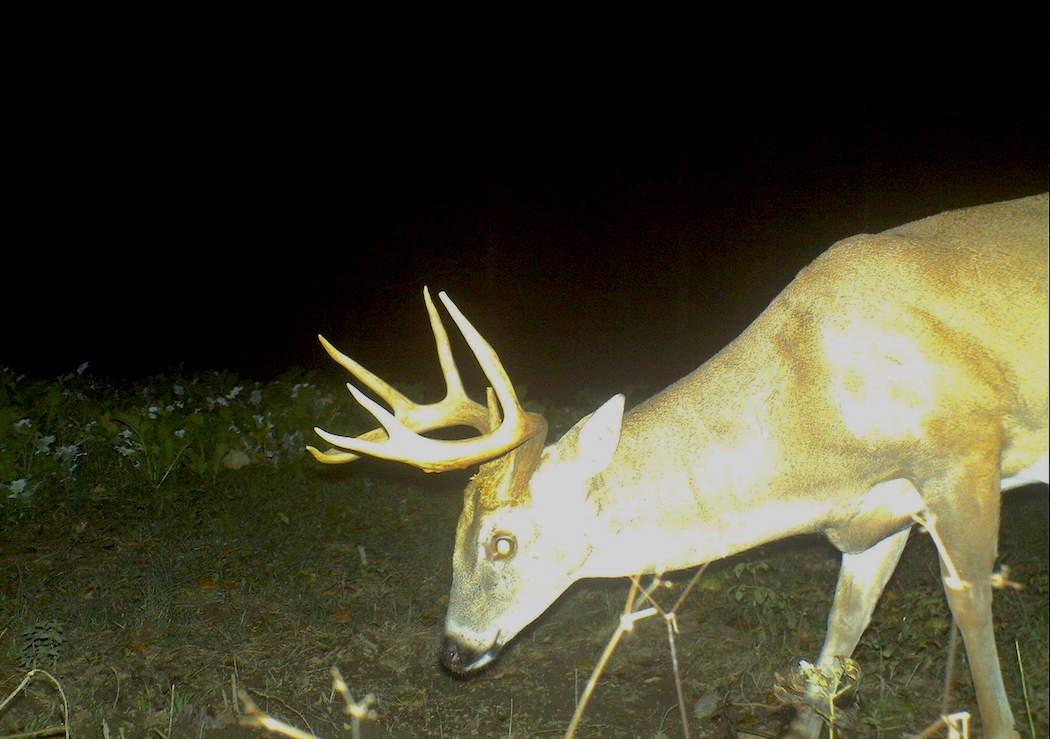
A friend and I sat in the same pair of stands eight mornings in a row. We saw a lot of deer, but we were after this particular buck. On the eighth morning, we spotted this deer exactly where we expected to. My friend didn't get a shot off, but our encounter showed us just how important hunting in one location can be.
Lesson: As long as the wind direction doesn't change, hunting in the same stand several days in a row can be a great tactic. Think about it, if it's a good spot, a nice buck is bound to walk through eventually, especially if it's the rut. Stick it out and hunt a spot. I've killed five of my eight biggest bucks by hunting a stand for several consecutive days. Just don't abuse this tactic or you'll quickly burn out a stand.

On the ninth morning, my buddy and I saw this big buck from the stand (it'd obviously shed its velvet by then ‚ this is a summertime photo). The buck passed by just out of range and traveled on down the ridge. I grunted and rattled to the deer. The buck was broadside at 10 yards less than 15 minutes later. My friend took care of the rest.
Lesson: Call to bucks that don't come within range. It works. Sometimes they'll come back. You'll never know if you don't try.
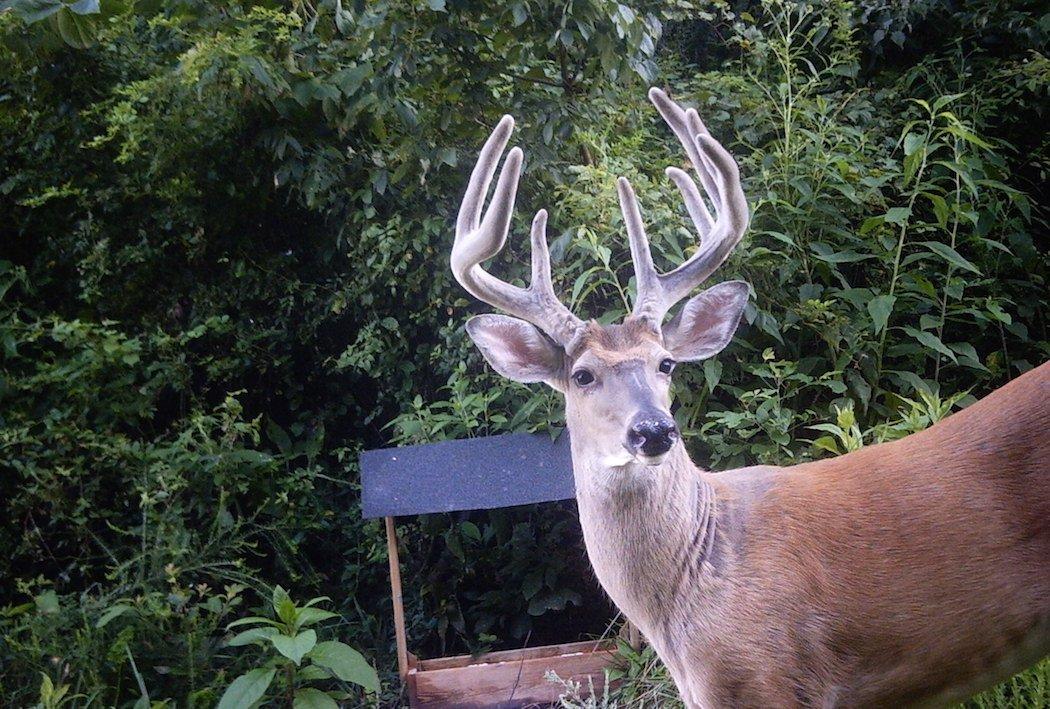
I stuck this big buck back in September of 2011. I put it right behind its shoulder. I hit the mark. I left to go get something to eat. I figured that'd give the deer plenty of time to expire. It rained just as soon as I got to town.
Lesson: Don't let rain beat you to a blood trail. Keep an eye on the weather and monitor it after you've shot a deer. When I went back to trail this deer up, there was no blood. No tracks. No sign at all. Four of us looked for 10 hours that day. I came back and looked the next two days on my own for 20 more hours. I never found that deer.
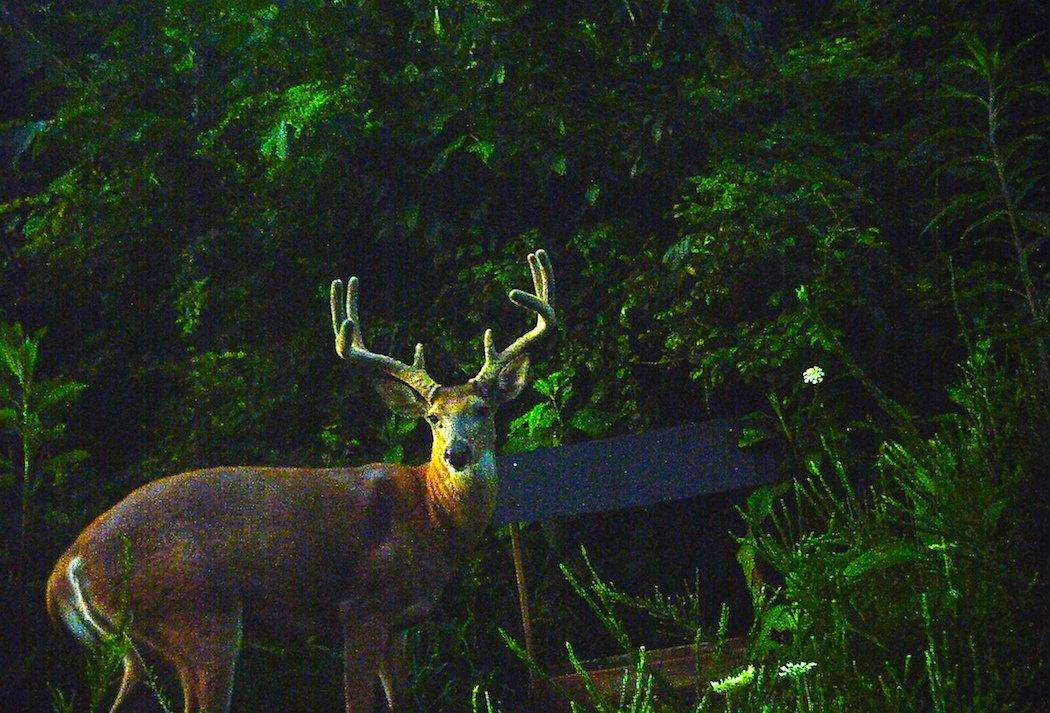
I hunted this deer for two years. During the second, I watched it run right by me, glide across the property line, and get shot by another hunter. I witnessed it all. And it crushed me.
Lesson: In the beginning, as I watched it happen, I was a bit sour. I won't lie. I'd spent two years trying to kill this particular deer, only to watch it get shot by someone else that I didn't even know. But that sourness quickly turned to happiness for the man. That brief tinge of envy soon turned to gladness that someone was taking that deer home. And that incident changed my perspective forever. Not once have I become jealous or envious of another hunter since then. Consider this my confession. In fact, I really do get stoked when the neighbors kill one. Because I know they love this way of life just as much as I do.







